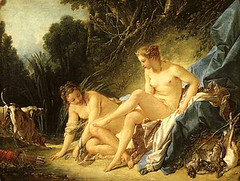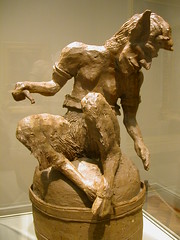If you want to paint like a Pre-Raphaelite there are one or two technical points which will help you achieve a rich, detailed and lustrous surface. One of the most interesting of the group from a technical point of view was William Holman Hunt and I am going to explain the method he used when painting Our English Coasts 1852 (Strayed Sheep) which is in the collection at Tate Britain.
To obtain the kind of surface that Hunt aimed for you could certainly consider the following:
Use an oil rich painting medium.
Use sable rather than bristle brushes for your detailed work.
The advantages of an oil rich painting medium are that you have a buttery medium which dries to a lustrous, enamel like surface. Hunt said that his formula was:to use equal quantities of walnut or poppy oil,copal varnish and turpentine.
These materials may be obtained from good art material shops.
The advantages of sable brushes are that they give much finer, neater lines than you can get with bristle brushes and with broader sables they can give a softer,more even touch.They are very expensive and need careful looking after.
Hunt worked on a white ground, which also helps if the paintwork is thin and the ground can reflect light through it.He said that he would cover the underdrawing on his canvas with a thin layer of spatula applied white oil from which most of the oil had in fact been removed by allowing the paint to stand on a newspaper. Before applying this thin layer he added a drop of varnish.
So he sometimes was painting wet into wet-and with a very light touch.
You can get further detailed information on Hunt and from: Completing the Picture: materials and techniques of twenty-six paintings in the Tate Gallery.This was published by the Tate Gallery , London in 1982. No overall author is listed but the foreword is by Allan Bowness.The actual section on Hunt is by Christine Leback Sitwell.









